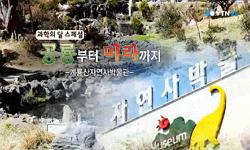이 논문은 탄허택성(呑虛宅成, 1913-1983)의 민족불교사상이자 미래학인 간산사상(艮山思想)을 그의 회통정신의 근간을 이루는 화엄학과 역학을 회통하여 분석해 본 것이다. 먼저 탄허의 출가 ...
http://chineseinput.net/에서 pinyin(병음)방식으로 중국어를 변환할 수 있습니다.
변환된 중국어를 복사하여 사용하시면 됩니다.
- 中文 을 입력하시려면 zhongwen을 입력하시고 space를누르시면됩니다.
- 北京 을 입력하시려면 beijing을 입력하시고 space를 누르시면 됩니다.
https://www.riss.kr/link?id=A106357504
- 저자
- 발행기관
- 학술지명
- 권호사항
-
발행연도
2019
-
작성언어
Korean
-
주제어
탄허택성(呑虛宅成) ; 간방(艮方) ; 간산사상(艮山思想) ; 화엄학(華嚴學) ; 역학(易學) ; 화역불이(華易不二) ; 오대산 ; 계룡산 ; 정역팔괘도(正易八卦 圖) ; 용화정토(龍華淨土). ; Tanheo Taekseong(呑虛宅成) ; Ganbang(艮方:one of the 24directions) ; Gansan thoughts(艮山思想) ; Flower Ornament Study(華嚴學) ; Study of Change(易學) ; Flower Ornament-Change nonduality(華易不二) ; Odaesan(五臺山) ; Gyeryongsan(鷄龍山) ; Eight trigram of JeongYeok (正易八卦圖) ; dragon-flower pure land(龍華淨土). ; 呑虛宅成 ; 艮方 ; 艮山思想 ; 華嚴學 ; 易學 ; 華易不二 ; 正易八卦圖 ; 龍華淨土
-
KDC
220.1
-
등재정보
KCI등재
-
자료형태
학술저널
- 발행기관 URL
-
수록면
135-172(38쪽)
- DOI식별코드
- 제공처
- 소장기관
-
0
상세조회 -
0
다운로드
부가정보
국문 초록 (Abstract)
이 논문은 탄허택성(呑虛宅成, 1913-1983)의 민족불교사상이자 미래학인 간산사상(艮山思想)을 그의 회통정신의 근간을 이루는 화엄학과 역학을 회통하여 분석해 본 것이다. 먼저 탄허의 출가 전의 자(字)인 ‘간산(艮山)’에 주목하고, 화엄학과 역학에서의 ‘간방(艮方)’의 의미에 대해서 고찰하였다. 아울러 한국의 두 간산에 해당하는 오대산과 계룡산의 의미망에 대해서 분석하고, 탄허가 자신의 주처를 두 간산에 두었던 의미에 대해 『정역』을 활용하여 살펴본다. 아울러 『화엄경』에서 문수보살의 주처에 대해 「보살주처품」에서는 ‘동북방’, 「여래명호품」에서는 ‘동방’으로 상이하게 나타나고 있는데, 이에 대한 이통현의 화엄학과 역학을 회통한 화역불이(華易不二)의 주석을 분석해본다. 여기에 화엄학과 정역학을 회통하여 전개한 탄허의 회석(會釋)을 확충하여 「보살주처품」의 동북방은 선천이며, 「여래명호품」의 동방은 후천의 ‘간(艮)’임을 문왕팔괘와 정역팔괘를 대조하여 논증해 보았다. 탄허는 한국이 간방(艮方)임에 주목하고, 지리적 간산인 오대산과 정신적 간산인 계룡산을 왕래하면서 간방인 한국에서 미래의 정신문명이 새롭게 개벽할 것임을 확신하고 자신의 학술을 전개했다. 계룡산 자광사의 창건과 학하리에 화엄대학원을 세우고자 했던 것도 바로 이러한 그의 간산사상에서 기인한 것이다. 화엄학과 역학을 융회한 그의 회통정신의 근저에 민족불교정신이 자리잡고 있었음을 확인하고, 그의 이러한 화역회통(華易會通)을 확충하여 경전의 의미를 더욱 깊이 고찰해 볼 수 있다는 것이 본고의 의의라고 하겠다.
다국어 초록 (Multilingual Abstract)
This study aims to analyze Tanheo Taekseong(呑虛宅成, 1913-1983)'s Gansan thoughts(艮山思想), which is his Korean national Buddhism and Futurology. To this end, I used a methodologies to analyze Flower Ornament Study and Study of Change in a i...
This study aims to analyze Tanheo Taekseong(呑虛宅成, 1913-1983)'s Gansan thoughts(艮山思想), which is his Korean national Buddhism and Futurology. To this end, I used a methodologies to analyze Flower Ornament Study and Study of Change in a interpenetrational way. Tanheo's Confucian name was Gansan(艮山), he became a monk at Odaesan Mountain in the northeastern part(Ganbang:艮方) of Korea. However, in Flower Ornament Sutra, the place where Munsu Bodhisattva is annotated is differently recorded as two places in the northeast and the east. Li Tongxuan commented on this by referring to Flower Ornament Study and Study of Change, and Tanheo also supported the method. But Tanheo commented more broadly in addition to this, using a JeongYeok(正易) called the Korean Study of Change. Tanheo was convinced that the future spiritual civilization will start anew in Korea while staying at the geographical Gansan, Odaesan, and Gyeryongsan, a spiritual Gansan. This was the reason why he built a temple called Jagwangsa(慈光寺) on Gyeryongsan Mountain and also because he planned to establish Flower Ornament Graduate School. Tanheo considered Odaesan as the Gansan of Former World, and was convinced that Gyeryongsan as the Gansan Latter World. He also stressed that Gansan, which symbolizes Korea, is dragon-flower pure land, and this is the core of his vision for the future.
목차 (Table of Contents)
- 한글요약
- Ⅰ. 머리말
- Ⅱ. 탄허와 간방(艮方)의 인연
- Ⅲ. 화엄학(華嚴學)과 역학(易學)에서의 간방관(艮方觀)
- 1. 화엄학에서의 간방의 의미
- 한글요약
- Ⅰ. 머리말
- Ⅱ. 탄허와 간방(艮方)의 인연
- Ⅲ. 화엄학(華嚴學)과 역학(易學)에서의 간방관(艮方觀)
- 1. 화엄학에서의 간방의 의미
- 2. 역학에서의 간방의 의미
- Ⅳ. 화역불이(華易不二)의 간산사상(艮山思想)
- 1. 화엄과 선천(先天)의 간산: 오대산
- 2. 역학과 후천(後天)의 간산: 계룡산
- Ⅴ. 맺음말
- 참고문헌
- Abstract
동일학술지(권/호) 다른 논문
-
- 한국정토학회
- 최동순
- 2019
- KCI등재
-
가재의 『정토론』에 드러난 왕생요인(要因)과 왕생인(人)
- 한국정토학회
- 정관균(법상)
- 2019
- KCI등재
-
- 한국정토학회
- 이민경(탄호)
- 2019
- KCI등재
-
- 한국정토학회
- 김창숙(효탄)
- 2019
- KCI등재





 KCI
KCI eArticle
eArticle



